With an opera and a ballet, Frida Kahlo and Diego Rivera ruled 2023 L.A.
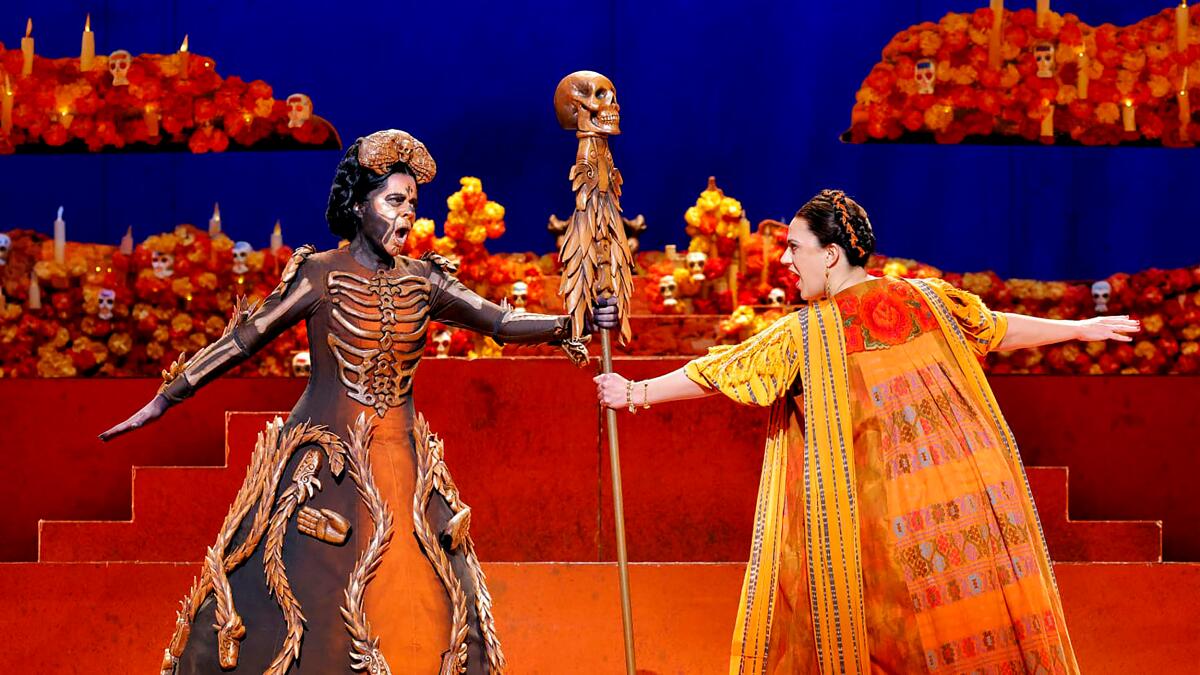
Will my jury duty ever come to an end? Is time more circular than linear? Can someone please punch some windows into the Stanley Mosk Courthouse? I’m Carolina A. Miranda, art and design columnist for the Los Angeles Times, with this week’s existential questions and essential arts news:
Las Dos Fridas
It is easy to see why the story of Diego Rivera and Frida Kahlo makes for excellent drama. Two famous painters — one more famous in life, the other in death — each iconic in their own way. There is Rivera: barrel-shaped, sleepy-eyed, one of Los Tres Grandes, the Big Three, who with his murals helped define Mexican national identity in the wake of the 1910 revolution. And there is the bird-like Kahlo, whose artistic origin tale begins with a nightmarish bus accident and ends with her making of her image — and her many bodily devastations — transcendent canvases.
Kahlo and Rivera were lovers and adversaries, confidants and intellectual partners, a viral artistic power couple before virality was a thing. They are figures who to this day can be conjured by first name alone. In other words, they are perfect material for an opera.
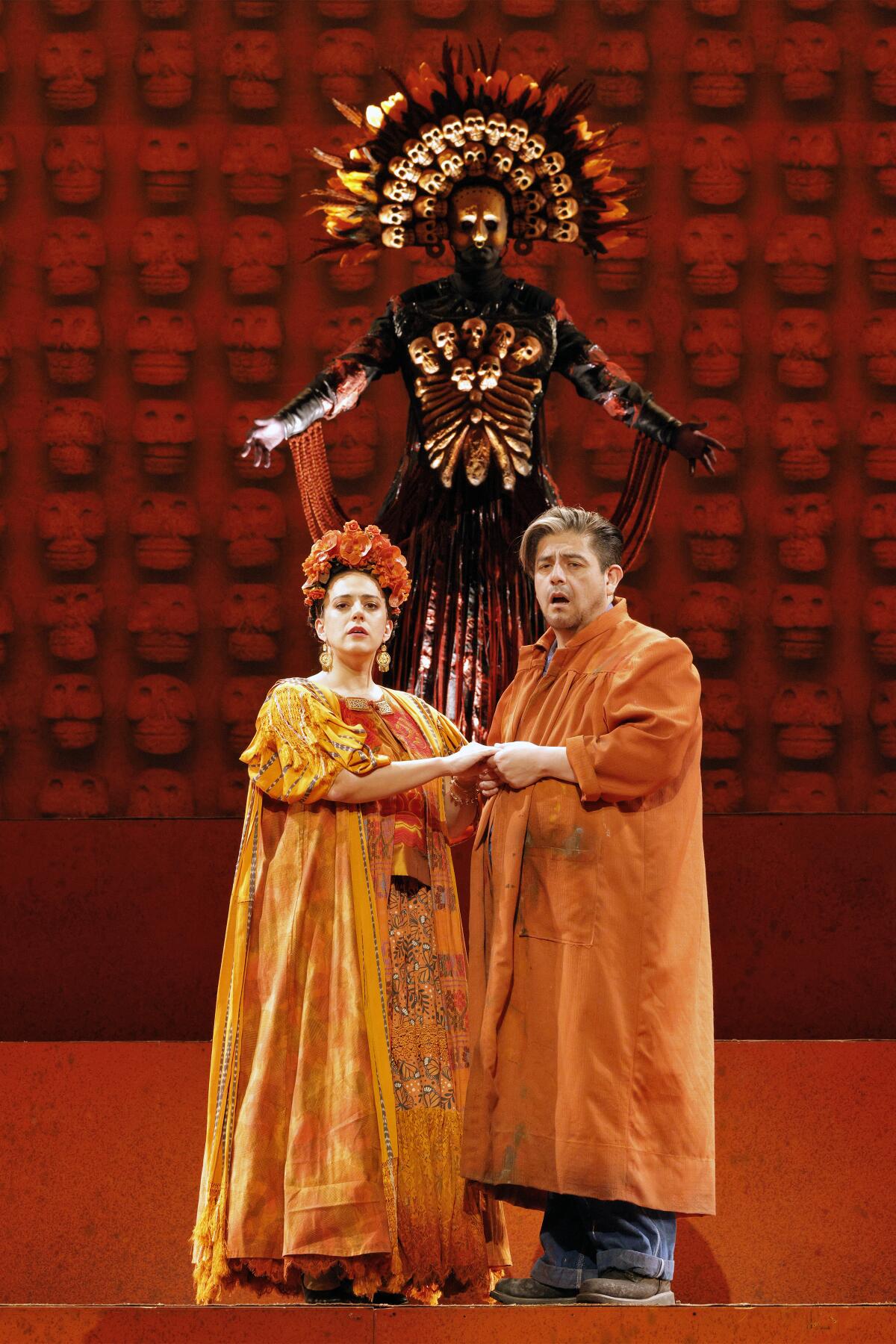
On Saturday, L.A. Opera will stage the final performance of “El último sueño de Frida y Diego,” (The Last Dream of Frida and Diego), which had its world premiere last fall at the San Diego Opera. A co-production with San Francisco Opera, the work was presented in the Bay Area over the summer and landed at L.A.’s Music Center last month. It happened to arrive just six months after the Dutch National Ballet presented the original ballet “Frida,” which was likewise inspired by the couple’s life together. More than six decades after the deaths of both artists in the 1950s, they remain more present than ever.
The opera takes an interesting approach to a now well-worn narrative. Rather than repeat the story of Kahlo’s fateful accident and her tempestuous on-and-off marriages to Rivera, the story is set after Kahlo’s death. It is the Day of the Dead. Rivera (played by Alfredo Daza) is at her graveside, imploring her to visit. Yet Kahlo (Daniela Mack) isn’t particularly interested in reliving her worldly agonies. The book is by Pulitzer Prize-winning playwright Nilo Cruz, with music by Berkeley-born, Grammy-nominated composer Gabriela Lena Frank. (When the show was presented in San Francisco, it marked the first time SF Opera had produced an opera sung in Spanish or a work by a female composer of color.)
You’re reading Essential Arts
Make the most of L.A. with our guide to events and happenings in the SoCal arts scene. In your inbox once a week.
You may occasionally receive promotional content from the Los Angeles Times.
As the San Francisco Chronicle’s classical music critic Joshua Kosman noted in his review of the opera back in June, the narrative could use some tooling. (More tension and more considered choreography at moments of high drama would help.) But as is to be expected of an opera about two artists, the production is a visual feast.
Scenic design by Jorge Ballina and costumes by Eloise Kazan adroitly honor their subjects and their art. In the first act, Kahlo and her fellow muertos appear in garments reminiscent of clay — a rendering of the underworld that gets away from trite reds and blacks. And, in the second act, a deeply saturated cornflower blue set evokes the deep hues of Kahlo’s Caza Azul in Mexico City (otherwise known as the Museo Frida Kahlo), as well as the stripped-down geometric forms of Mexican Modernists such as Luis Barragán and Juan O’Gorman.
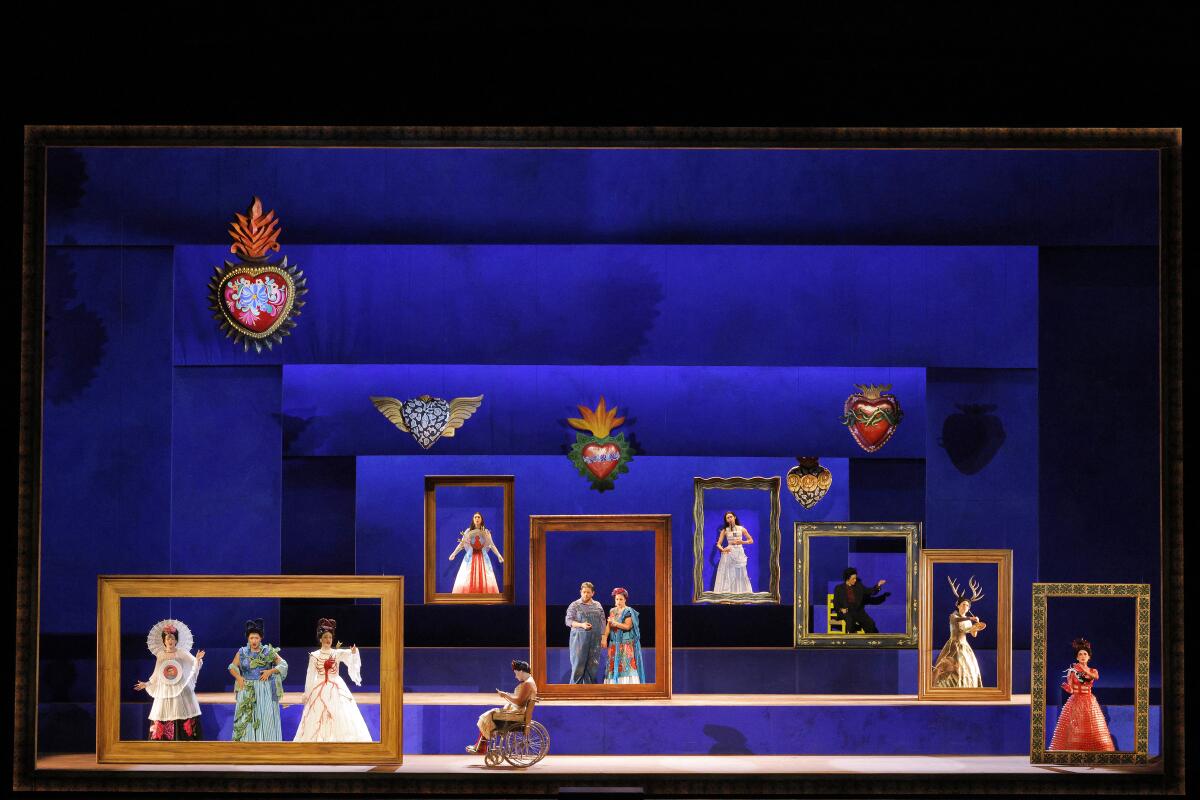
The Dutch National Ballet’s production of “Frida” likewise drew from the aesthetics of the artists. Choreographed by Annabelle Lopez Ochoa, with music by Peter Salem and some highly imaginative scenic and costume design by Dieuweke van Reij, the ballet employed the iconography frequently associated with Kahlo and Rivera: the Tehuana ensembles donned by Kahlo, the deeply saturated color palettes, the many calaveras — albeit in more contemporary, minimal ways.
The ballet — which featured the magnetic Maia Makhateli in the title role — took a more traditional approach to Kahlo’s life, tracking her story and her history with Rivera chronologically, if very dreamily. Makhateli, a dancer who can alternately convey fragility and steeliness, helped make the ballet more than the Frida and Diego story, effectively channeling Kahlo’s complex interiority through movement. (Also remarkable was Erica Horwood as a sprightly deer.)
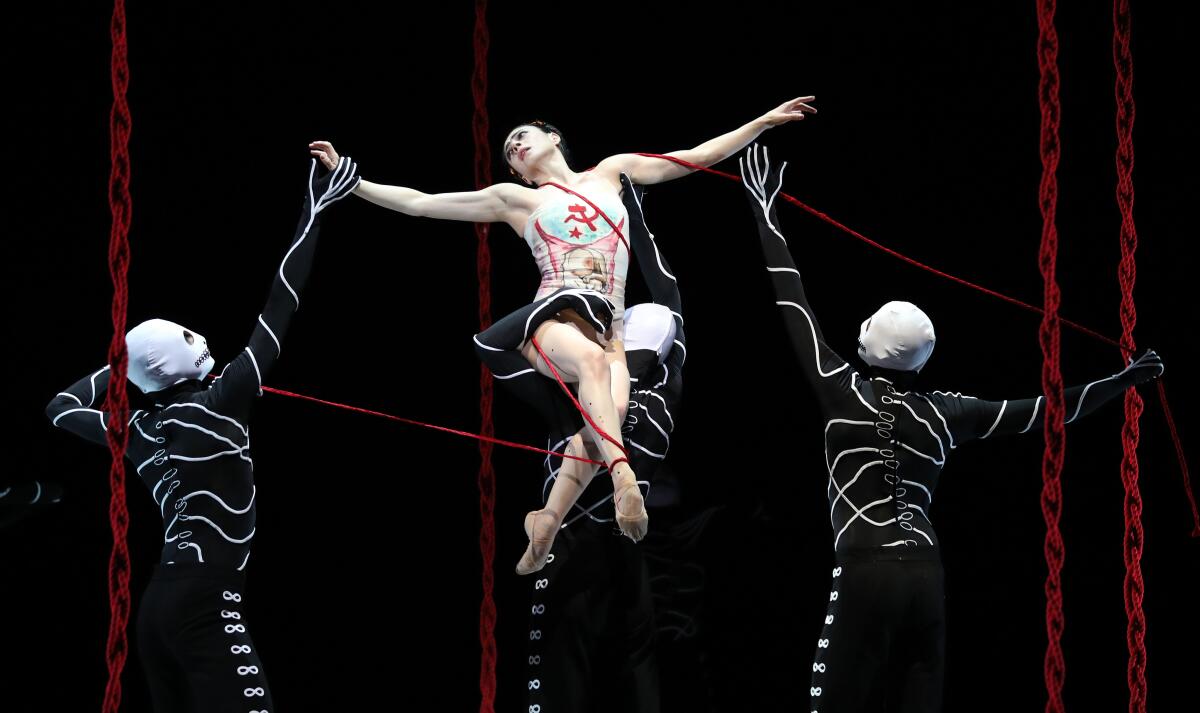
Both the opera and the ballet found ways of transmitting Kahlo’s bodily agonies in striking ways — namely through the use of red ribbons (though the ballet used it to better effect). And both staged scenes inspired by the artists’ paintings, which creates moments of recognition, but can also veer dangerously close to the living tableaux of Pageant of the Masters.
Both works also toyed with gender in much the same way Kahlo herself did. (Over the course of her life, the artist, who was known for having affairs with women, was photographed in men’s button-down shirts and three-piece suits.) The opera featured a beguiling underworld Greta Garbo impersonator named Leonardo (beautifully sung by countertenor Key’mon W. Murrah) and the ballet included numerous variations of Frida — roles that were all danced by men.
Most significantly, both works center the relationship between Kahlo and Rivera. The artists’ union is certainly a terrific dramatic device. There are high-profile infidelities, breakups and makeups. But as the Kahlo-Rivera story hardens into myth, it can also be a trap: Kahlo and Rivera forever caught in each other’s orbits, Kahlo’s groundbreaking work as a painter swept away by an all-consuming love story.
It’s a good story, perfectly suited to ballet and opera. But it isn’t the only one. I’m personally hoping for a chatty play that features Kahlo trash-talking the art world with a group of female surrealists.
In and out of the galleries
To mark the centennial of the Treaty of Lausanne, which served as a bookend to the final skirmishes of World War I, LACMA is presenting “Imagined Fronts: The Great War and Global Media.” Organized by curator Timothy O. Benson, the show looks at how the war was presented through the lens of burgeoning mass media. Times art critic Christopher Knight describes some remarkable works (including a watercolor by Otto Dix), but notes that the installation shortchanges film.
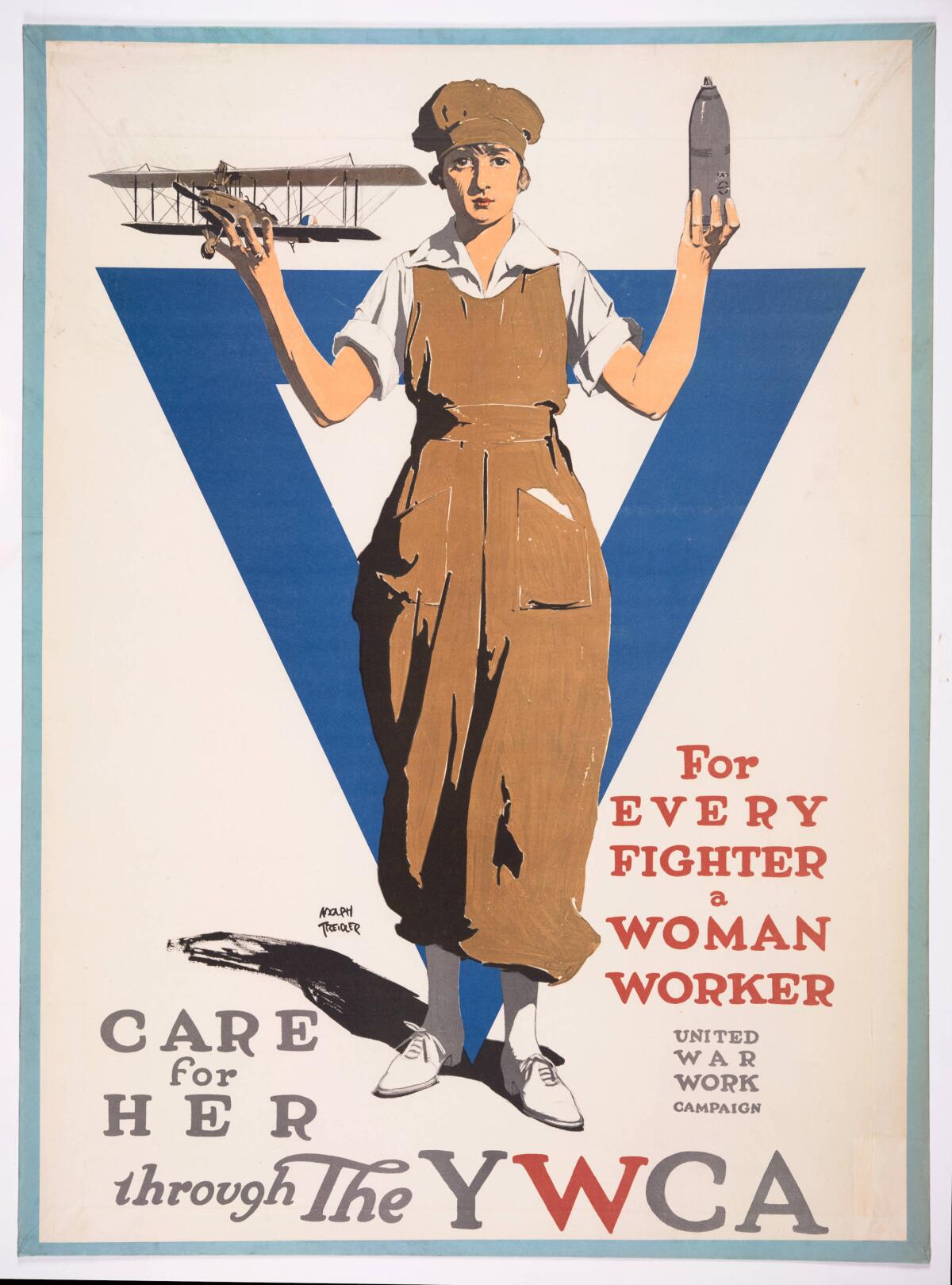
Deborah Vankin chronicles a curious pilgrimage: hikes organized by gallerist Lauren Powell that feature artists carrying work on a 2½-mile journey into Griffith Park. Vankin joined the crew for a recent jaunt that featured paintings and poetry by artist Senon Williams (as well as a pretty spectacular sunset). These walks, says Powell, are about bringing “the gallery outside of the four walls to the public.”
While I was in D.C., I checked out the stained glass windows that painter Kerry James Marshall created for the Washington National Cathedral — pieces that replace two pairs of windows that once depicted Confederate generals. Marshall’s designs — which honor protest — bring a lot of light to the Gothic-style cathedral, which is itself a very curious building.
On that note: the venerable Art21 did a segment with Marshall about the creation of the windows.
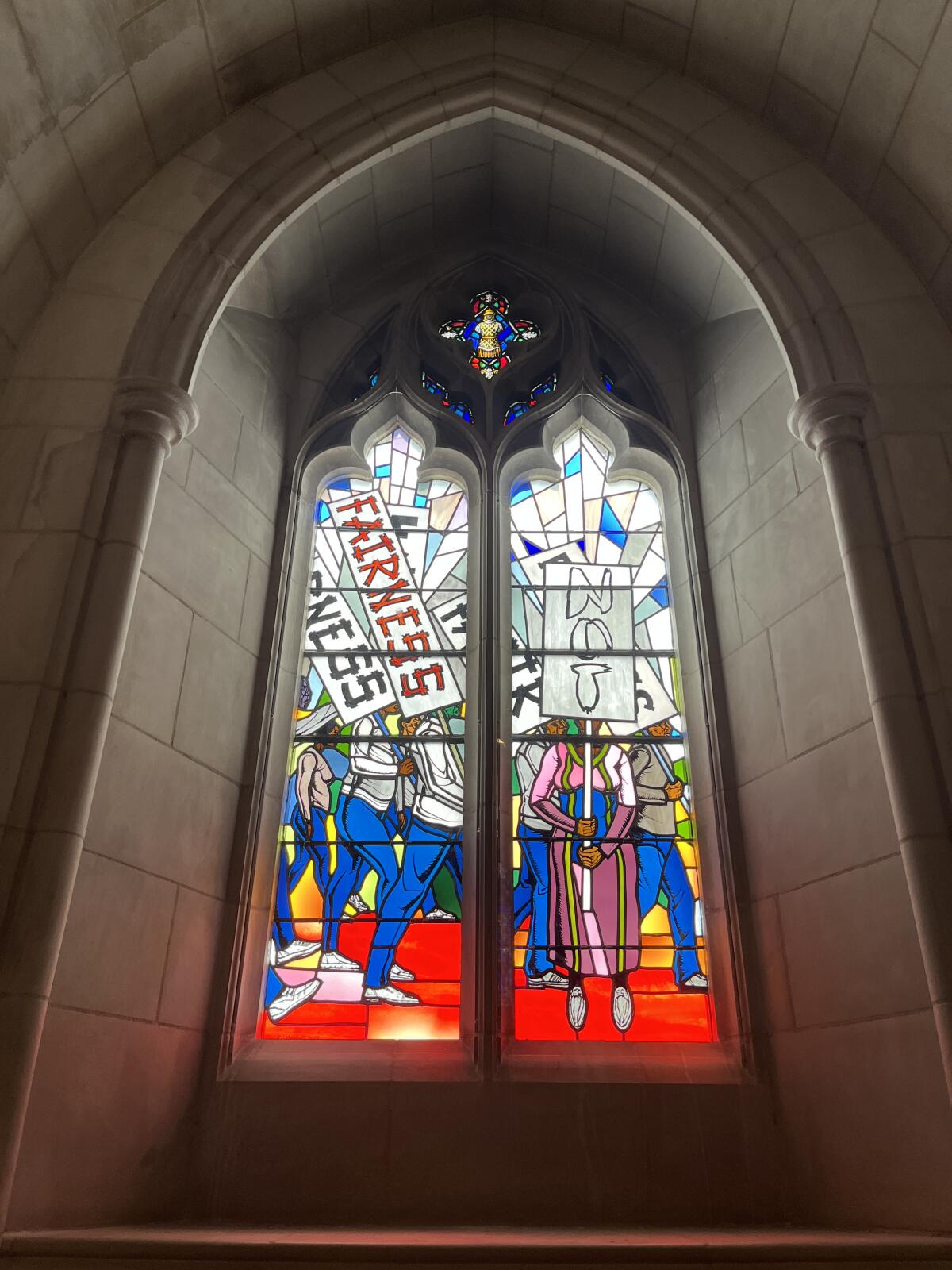
On and off the stage
Tony Award-winning actor Matthew Broderick is starring in the new stage version of Sinclair Lewis’ 1922 satirical play “Babbitt,” currently on view at the La Jolla Playhouse in a production directed by Christopher Astley. Broderick, writes theater critic Charles McNulty, is “a natural for the role,” which requires him to channel middle-age malaise. The story, he adds, remains “trenchant despite the homogeneity of the society that was being satirized.”
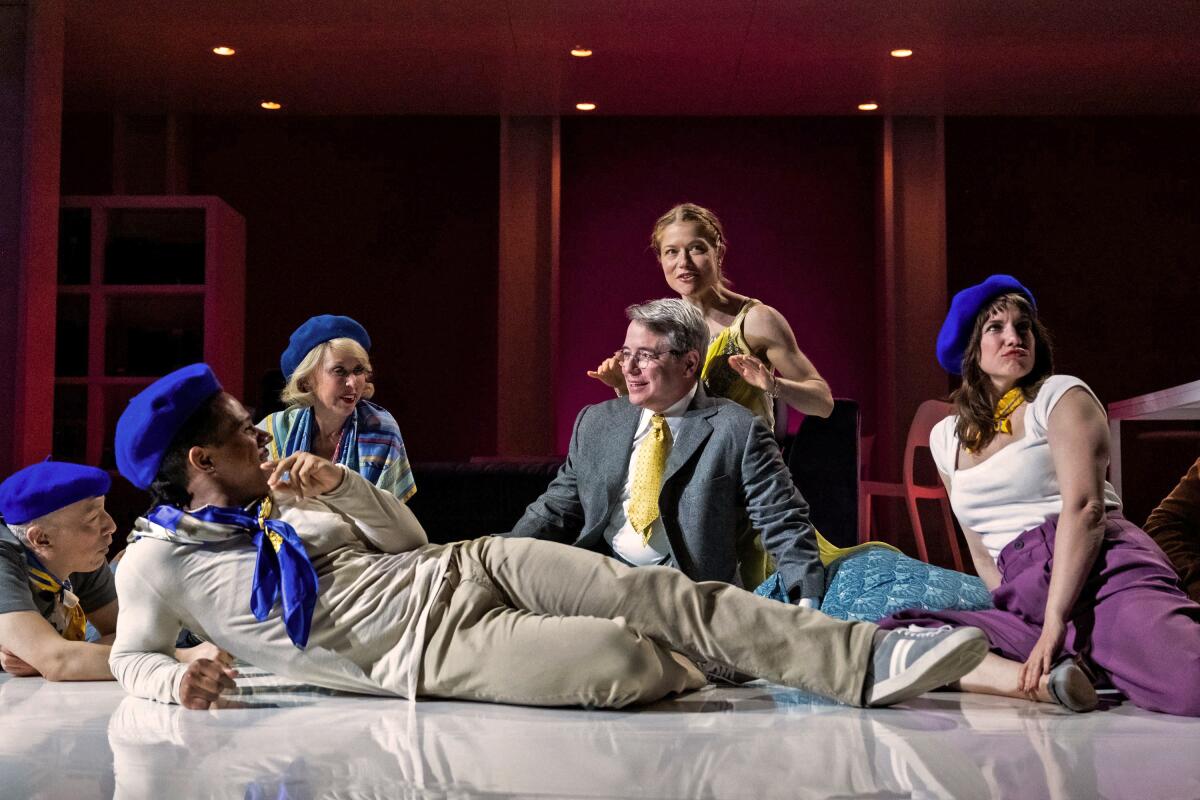
The most wonderful time of the year
A.K.A. year-end roundup time!
Charles McNulty summarizes the ups and downs in the world of theater — “a year of exuberant celebration and deepening gloom.” The wins includes the Pasadena Playhouse’s Regional Theater Tony Award, but it comes amid a year of cuts.
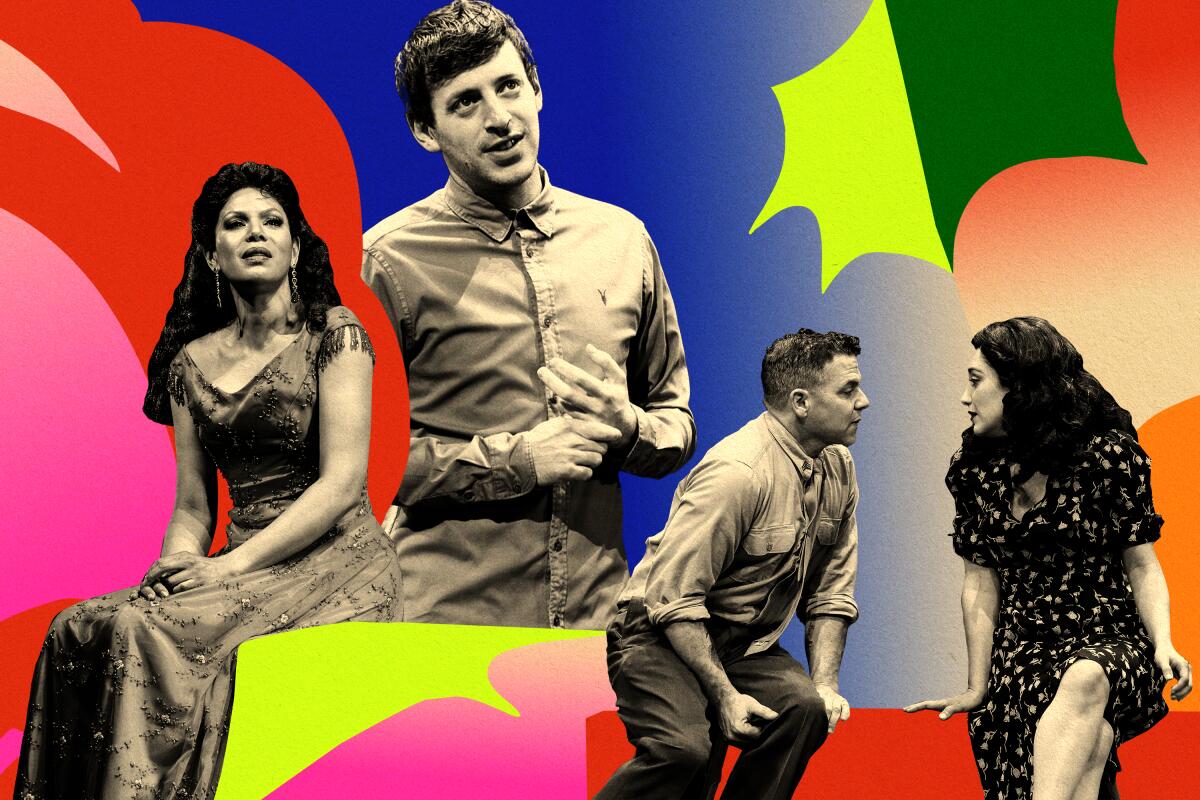
Christopher Knight has the 10 most memorable museum exhibitions of the year, which include Paul Pfeiffer at MOCA and Barbara T. Smith at the ICA LA — both of which remain on view.
In the books department, contributing critics Mark Athitakis, Hillary Kelly and Bethanne Patrick put together a long list of their 2023 favorites. Have added Ed Park’s “Same Bed Different Dreams” to my reading pile.
Plus, you can find The Times’ roundups of best shows, best songs, best albums and much more at this link.
Enjoying this newsletter? Consider subscribing to the Los Angeles Times
Your support helps us deliver the news that matters most. Become a subscriber.
I do not have a year-end list because I am currently entombed in a courthouse. But architecture critics Alexandra Lange and Mark Lamster kindly invited me to participate in their 14th Annual Architecture and Design Awards. These highly official awards feature honorifics such as the “Tom Wolfe Golden Turd of Reactionary BS” and the “Your Museum Doesn’t Need a Bulbous New Wing Trophy.” Watch out Pritzkers, here we come.
Israel-Hamas fallout continues
Artforum‘s December issue is noticeably thinner as it contends with staff turmoil and contributor withdrawals following the firing of top editor David Velasco. Velasco was let go after publishing an open letter in support of Palestinians in Gaza in the magazine that did not acknowledge the Israeli victims of Hamas attacks.
Gallerists Lévy Gorvy Dayan, who published a letter in Artforum that was critical of the initial open letter, had their gallery’s facade vandalized on Wednesday.
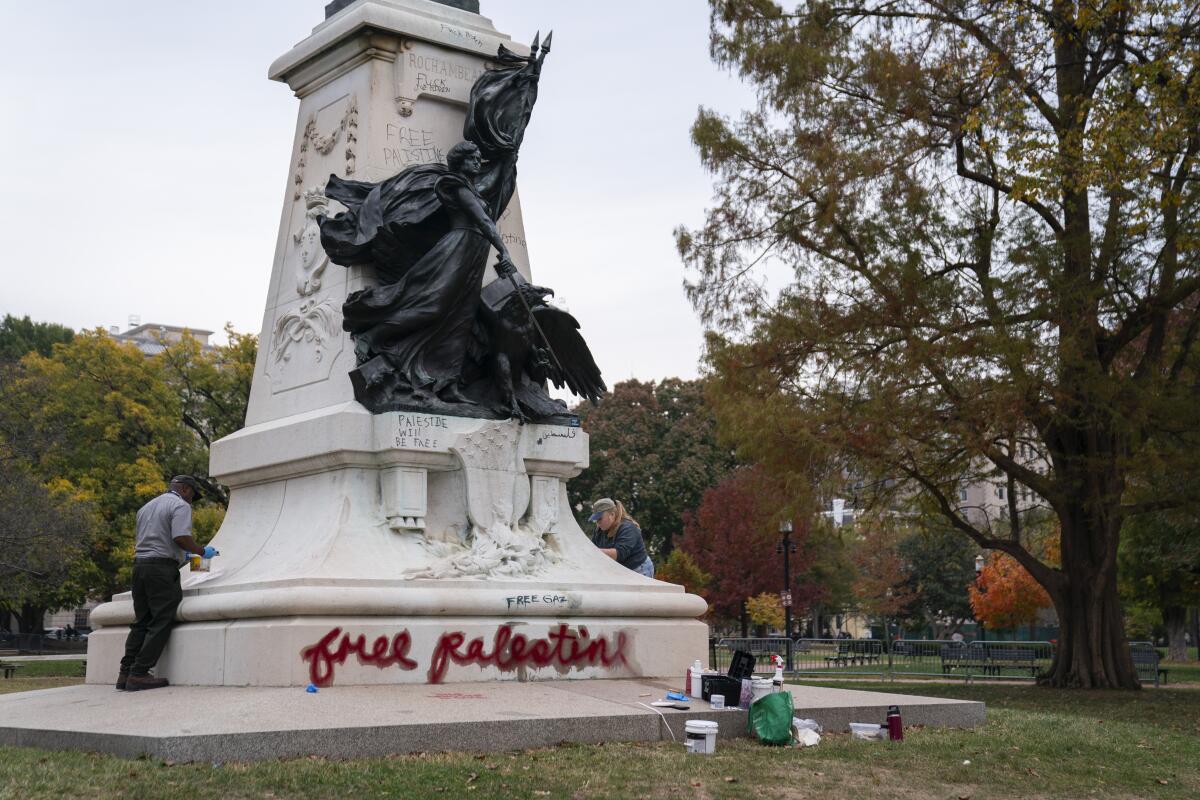
And because the letters keep coming: 1,300 artists, actors and writers — including Olivia Colman and Molly Crabapple — have signed an open letter accusing Western institutions of “silencing and stigmatizing” Palestinian perspectives.
Plus, the New York Times’ Alex Marshall has a story on how the Israel-Hamas conflict is roiling the German art world, putting uncomfortable limits on artistic freedom.
Essential happenings
My colleague Steven Vargas has all the artistic happenings in his L.A. Goes Out newsletter, including a trio of new exhibitions at Jeffrey Deitch that include works by the Haas Brothers, Peter Shire and Sonya Sombreuil, as well as salon-style dance nights at L.A. Dance Project.
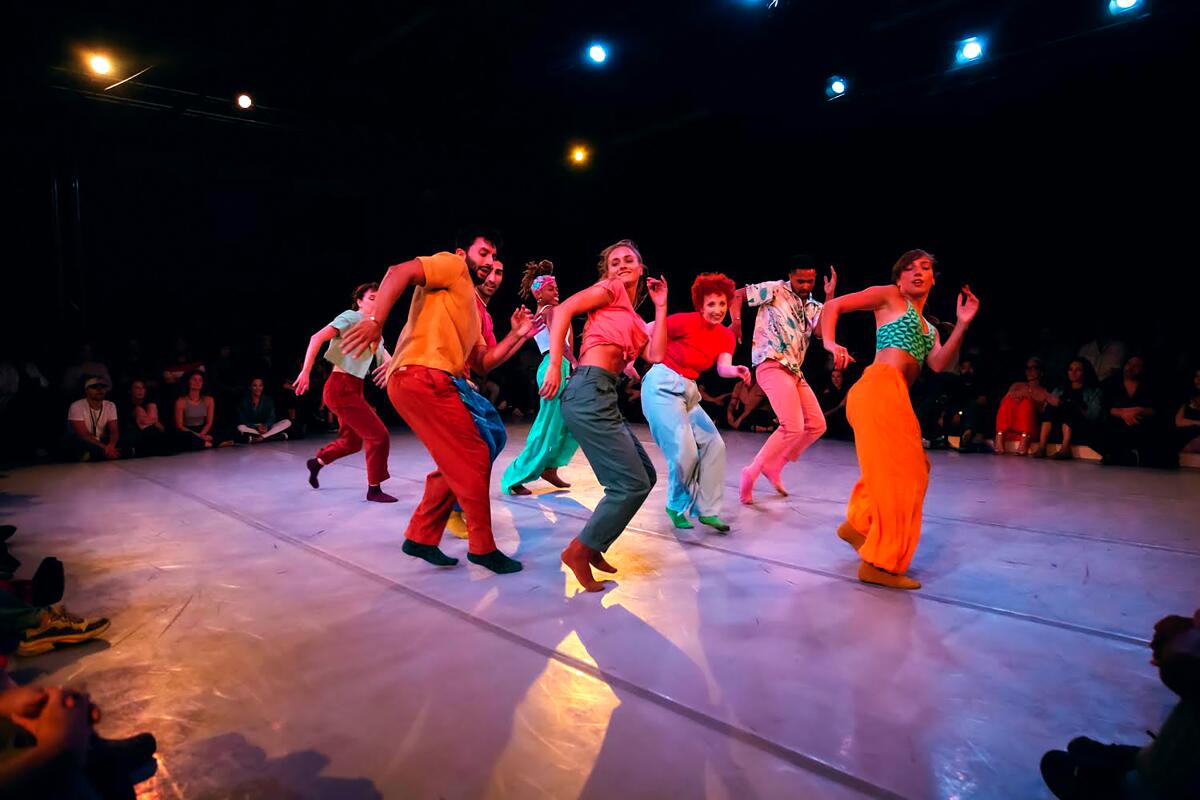
Moves
Brett Steele is leaving UCLA to take over as dean of the USC School of Architecture. His appointment goes into effect on Feb. 1.
Pritzker Prize-winning architect Toyo Ito is donating his archive, covering the period from 1971 to 1995, to the Canadian Centre for Architecture in Montreal.
Akinsanya Kambon has won the Hammer Museum‘s $100,000 Mohn Award, while Pippa Garner took home the $25,000 Career Achievement Award and Jackie Amézquita received the Public Recognition Award.
Artist Jesse Darling, whose installations evoke a dystopic Britain, has won the Turner Prize.
The Getty has acquired a trio of important European paintings by Gerard David, Ludger tom Ring the Younger and Anton Raphael Mengs.

Renée Fleming was among this year’s Kennedy Center Honorees, who also included Barry Gibb, Billy Crystal, Dionne Warwick and Queen Latifah.
Passages
Jane Wodening, a memoirist who first became known for her appearances in the experimental films of her husband, Stan Brakhage, has died at 87.
Gene Beery, whose text-based paintings presaged the work of figures John Baldessari and Lawrence Weiner, has died at 86.
Evan Maurer, a scholar of Surrealism, African art and Indian art, who directed the Minneapolis Institute of Art until 2005 and made it free to the public, is dead at 79.
Cobi Narita, a jazz impresario from L.A. who helped shape the New York scene, is dead at 97.
In the news
— “Spirituality or its monetization?” Hyperallergic’s Michael Glover pays a visit to Marina Abramovic‘s retrospective at the Royal Academy of Arts in London.
— SFMOMA cuts staff after a drop in attendance.
— Architect Yasmeen Lari finds resilience in bamboo.
— Berkeley’s Flora Lamson Hewlett Building, which was designed by Louis Kahn for the Graduate Theological Union but completed by other architects after Kahn unexpectedly died mid-project, has received a refresh courtesy of Russell Architects.
— How certain forms of dance honor the moves of elders.
And last but not least ...
I recently wrote about the architectural delights of the Fantastic World of the Portuguese Sardine shop in Times Square. Shortly thereafter, The Times’ newsletter editor Karim Doumar introduced me to Popping Tins, a Substack that is all about the wonders of tinned seafood. I may or may not have ordered a tin of mussels in pickle sauce from Galicia.
The biggest entertainment stories
Get our big stories about Hollywood, film, television, music, arts, culture and more right in your inbox as soon as they publish.
You may occasionally receive promotional content from the Los Angeles Times.




